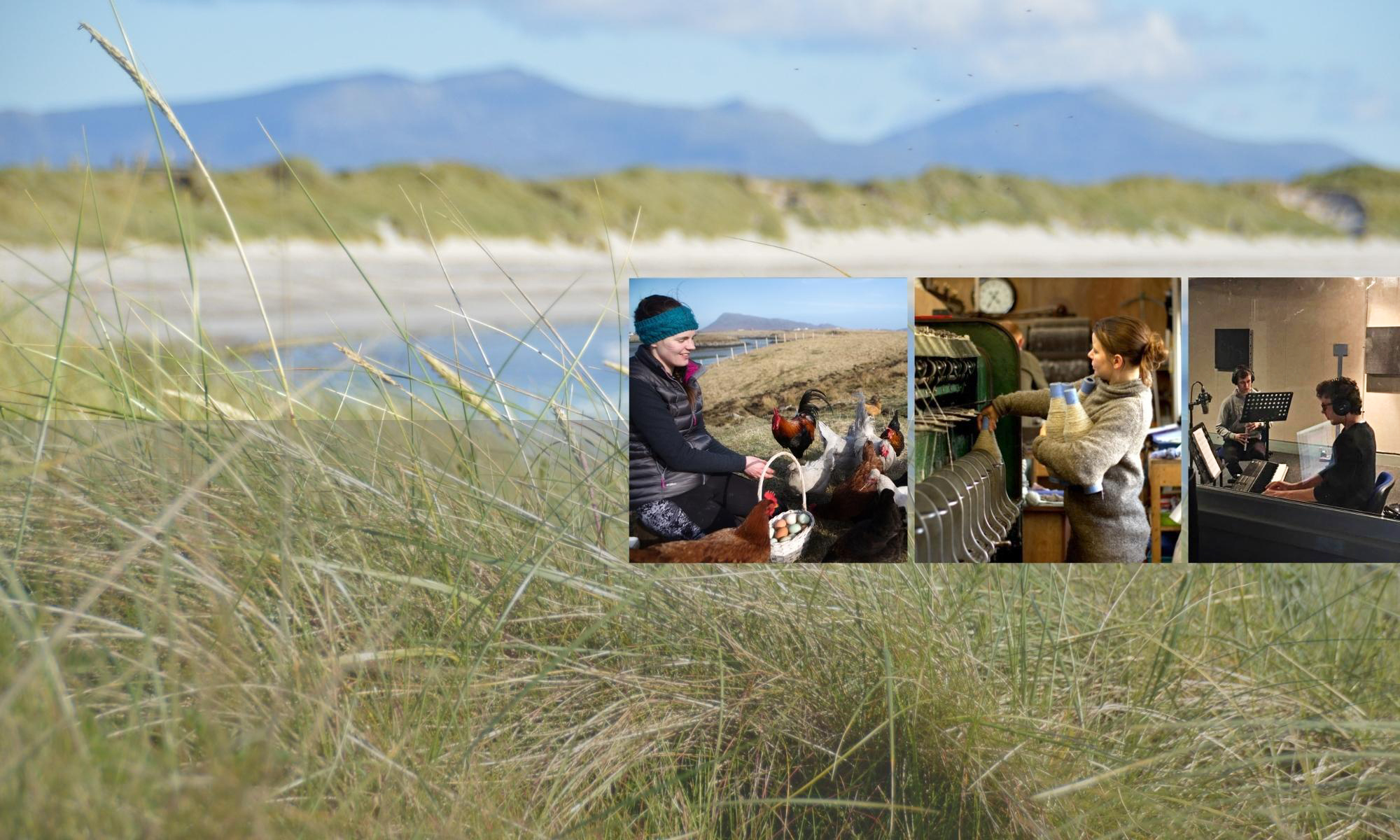by Theona Morrison and Thomas Fisher, Directors of CoDeL

Join us for the launch of the Uist Beò website on facebook live (https://fb.me/e/2yGzHzEZh) on 8 March 2023 at 6:30pm. And this is the related opinion piece that appeared in the March issue of the award-winning local community paper, Am Pàipear.
If I look through a window and you look through it – for all the outlook is the same, we will see and remember different things from that view.
This month sees the launch of the Uist Beò website to showcase a dynamic and vibrant Uist, through the eyes of young Uibhistich – entirely an insiders’ view.
Do we really know what’s going on in our own community? Are we seeing different things?
For long the dominant perception has been that we are in terminal decline. If the projected future population trends for the Outer Hebrides prove true in Uist, we will be turning out the lights before 2050.
But even five years ago this did not feel right. Gathering a list of 469 young Uibhistich in their 20s and 30s, we discovered half were returners or new to Uist: not the exodus of young people our community always assumed (“to get on, you have to get off”).
Why were so many in the prime of their working lives making Uist their home? The very first returner we asked gave a simple answer: “my social life here is so much better than in Glasgow”!
The ‘night time’ economy is not just for cities. Regular sessions from Saturday nights at Creagorry to the fortnightly Accordian and Fiddle Club as well as ceilidhs and fund-raising events, often with our many award-winning musicians. Are you dancing? Tuesday night Carinish, Saturday St. Peter’s, Sunday Stoneybridge, and that’s only for the adults!
Are you interested in art, crafts or archaeology, or sports (athletics, running, football, badminton, squash, golf, swimming indoors and outdoors, paddle-boarding, kickboxing, yoga, etc.)? Ceòlas, now at Cnoc Soilleir, has more than 100 joining their Gàidhlig classes.
Primary school children are spoilt for choice, especially in sports and music, Highland and Irish dancing. They could be at an activity every evening of the week, and at a fraction of the costs in a city, some even free.
So does the window you look through have an old frame or is it newer? Of course older generations hold memories of much greater numbers, from schools to dances. But how about the last decade? Last year we had only 9 fewer primary school pupils in Uist than 10 years earlier, out of more than 300. In Barra the number of primary pupils last year was 19% higher than in 2010! And this is likely to continue. Cothrom Òg Gàidhlig nursery has 26 children signed up and a waiting list. All pupils entering Daliburgh School for the last two years are in Gàidhlig medium.
Sustaining the number of younger children for a decade is a remarkable success. In Grimsay one child started primary school a decade ago, today there are 15 children. No, it’s not what is was 40 years ago, but it is more than 10 years ago. Locheport, with only 3 children recently, now has 13, with 3 more expected soon.
It’s too early to say whether the decline has bottomed out. For historical reasons we have a high proportion of elderly people, so there will be more deaths than births. But for many returning or making Uist their new home, the view through the window is looking exciting and vibrant.
Take all the young businesses. North Uist Distillery, set up by two young returners, now employs 13 people, bringing life back to one of Uist’s most historic buildings. We have award winning young businesses, e.g. Coral Box and Studiovans, who recycle plastic from our shores to create modular units for vans. As the Uist Beò website will show, we have young people and families in crofting, culture and music; beauty, health and wellbeing; photography, art and architecture. We have numerous PhD students, and many who work online, e.g. in the medical sector or web-based design. And the islands have the highest density of community enterprises per head of population in all of Scotland.
In hospitality the Politician, Croft & Cuan, the Bistro, Grimsay cafe, Westford Inn, the Dunes Cabin, Lochmaddy Hotel, the Berneray shop, the Wee Cottage Kitchen have all recently been taken over or set up, often by young people with children, showing confidence in the local economy. Many young people have told us that they see so much opportunity here.
The narratives we tell ourselves as a community are really important. Nobody would say we don’t have our fair share of challenges, what with ferries and housing! Many include jobs also, although the greater challenge is filling the many vacant jobs we have at all times, providing plenty of opportunity for people if they can only find somewhere to live.
Whether we view our glass as half empty or as half full has real impacts. Past ‘official’ narratives, of decline, a place to leave, or of a romanticised empty place to retire to, both undermine our future. Who wants to be in a place where the lights are going out soon? We don’t need to look far from our islands to see other islands now abandoned.
Whether here or in other island communities, we always first ask people, why are you here, in spite of the many challenges you obviously face? Many of us could join the numerous Hebrideans in Glasgow and elsewhere, but we choose to live here. Why? It isn’t because of ferries, shopping malls, ice rinks, diverse global foods.
More important factors are influencing our life choices, factors that came to the fore during Covid: land, sea and croft; community and family; wellbeing and resilience, freedom and safety; Gàidhlig and vibrant culture; dynamic community groups and activities; small class sizes and dedicated teachers; being valued for who we are, a sense of equality; our strong sense of identity and belonging, of being there for each other; etc. etc.
Many of us have lived elsewhere, including when young people leaving school go to experience life elsewhere. So we can recognise how valuable all those factors are, how at home we can feel here, and how envious people elsewhere are of what we have, and share.
So let us all, from individuals and community groups to agencies and CnES, ditch managing decline, rationalising and centralising, and instead invest in our future, by building on these great foundations, including a more assertive community that no longer kowtows to distant powerholders or outdated narratives.

